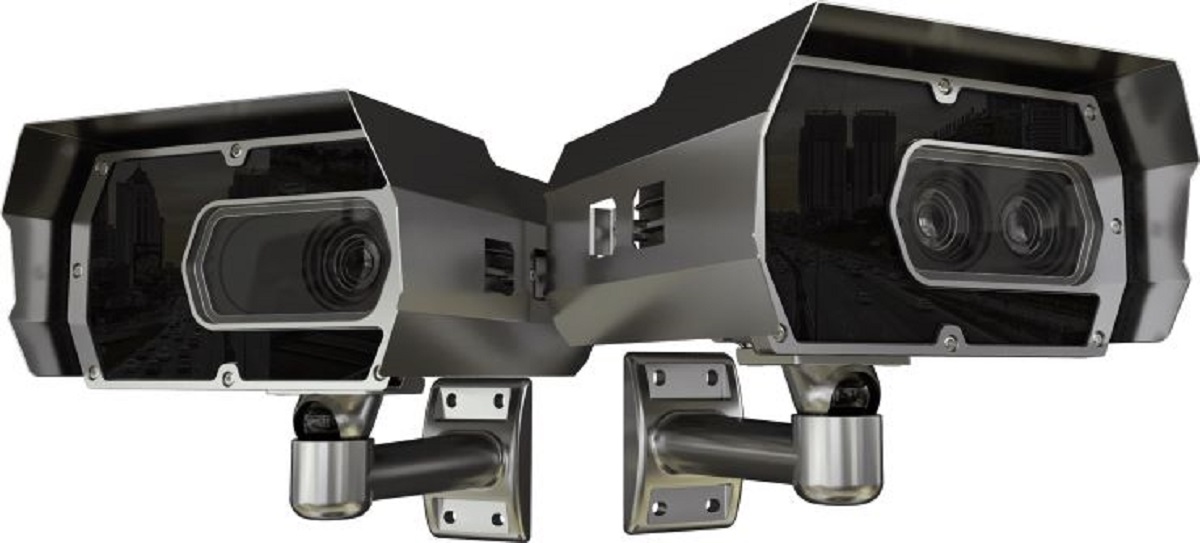Traffic jams, reckless driving, road incidents and parking lot chaos are just a handful of traffic flow disruptions often present on the road. Local and state authorities have the duty of monitoring the roadways in order to maintain safety and to improve efficiency. If there were no forms of surveillance present, criminal activity on the road might be expected to increase, and determining who’s at fault after accidents occur would be much more difficult. The flow of traffic might also be disrupted as regulators would have no solid and accurate data informing them of any issues in traffic flow.
In order to maintain peace, security and structure, officials must implement appropriate technologies to capture relevant information as accurately as possible. You may have noticed while driving, one time or another, a car parked inconspicuously (yet more often than not, pretty suspiciously) on the side of the road. While this driver may have simply pulled over to take a nap, it may well be a mobile road safety camera. This type of surveillance generally requires a physical operator to manage its functions.
While there’s nothing inherently wrong with such techniques, manually-operated systems can sometimes pose the following risks and inconveniences:
- Lengthy set-up times
- Inaccurate recognition
- Human-induced blunders.
Replacing manual methods of security and regulation-enforcement with automated devices may save authorities the hassle of preparation and possible inaccuracies, and instead arm them with real-time, valuable figures. Automatic Number Plate Recognition (ANPR) cameras are an example of the latest technologies created to ease some of the aforementioned stress, and if implemented, could revolutionize traffic flow monitoring.
What is an ANPR camera?
The ANPR camera was introduced as an effective means to collect vehicular-related data in hopes to better understanding how drivers use particular areas (highways, etc.) and operate their cars, as well as to generate comprehensive profiles related to traffic flow behavior.
These cameras are programmed to take photographs of all vehicles and automatically issue violations for unregistered and uninsured bodies. They don’t require any human interaction to capture/read number plates and convert them into text (using “OCR” or optical character recognition). Their self-direction, use of real-time analytics, and ability to function without external interference make them almost indispensable in this day and age where precision is such a high priority, especially when legal issues are involved. (1)
How does the ANPR Camera work?
Through the use of specific algorithms, the following actions take place to gauge a proper reading:
- Localization of license plate
- Adjustment of sizing and orientation of plate image
- Normalization of brightness and contrast
- Distinguish and segment alphanumeric characters
- OCR
- Syntactical and geometrical analysis of found information.
What does ANPR Camera offer?
The ANPR’s revolutionary potential comes from its expansive list of additional applications and features that offer the industry benefits that previous manually-led methods failed to provide.
Features and advantages of the ANPR Camera include
- Built-in laser for smart positioning of vehicle detection
- Face and object recognition
- Dual optic system for multi-purpose imaging
- Built-in license plate reader
- Automated triggering
- Make and model recognition
- Color identification
- Speed and distance measurement
- Self-set up and adjustment (recommended tilt angles, light conditions and automated image settings)
- Self-diagnostics
- Automated analysis of the environment
- Higher levels of (granular) detail
- Vehicle movement tracing
- Time-efficient
When determining how ANPR cameras can modernize and innovate the future of traffic control, it’s should be easy to acknowledge the power of the benefits listed above. Being able to track not only vehicles themselves, for example, but also the faces of the drivers, offers authorities an advantage over other, more basic systems. The more detail, the better the results when dealing with the safety and security of society.
Uses
ANPR cameras can aid in not only basic traffic control but in several other sectors involving some sort of vehicular movement. This could include the management of parking lots, police response operations (and crime prevention), intelligent transport systems (ITS), and other government activities.
Other uses may include
- Journey time monitoring (JTM)
- Speed limit enforcement
- On-site vehicle tracking and premise access management
- Monitoring of parking spaces
- Hospitality features (guest arrival notifications, access control, increased safety)
- Improving warehouse and fleet company operations
- Integrated security solutions
Final thoughts
With all the benefits of ANPR cameras, the idea that they could revolutionize traffic flow monitoring doesn’t seem too far-fetched. Replacing potentially risky manual operations with automated and accurate data generation may be the wisest course of action to ensure road safety and social structure. The adoption of these devices may also deter drivers from behaving in unruly, hazardous manners.
































































